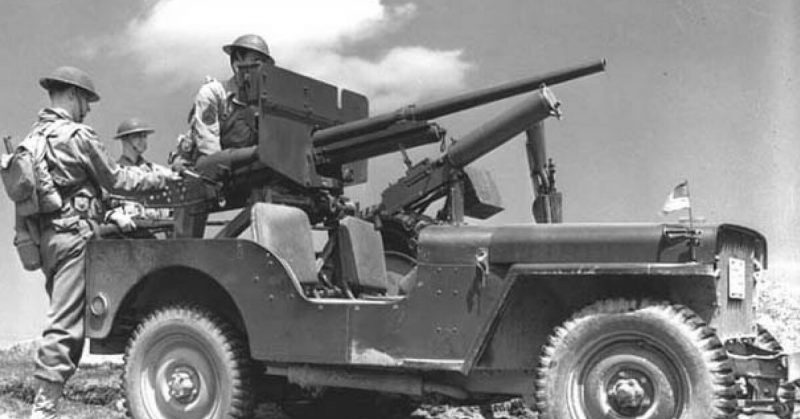75 years ago last year, the U.S. military adopted the jeep. The military jeep was eventually replaced with the High Mobility Multipurpose Wheeled Vehicle (HMMWV), also known as the Humvee. Now the Army is considering bringing back the Jeep.
The Army is looking for lightweight combat vehicles for infantry brigade combat teams. The vehicles sound a lot like what they started using back in 1940.
While in World War I, the US Army realized the need for a lighter, cross-country reconnaissance vehicle. In July 1940, the military sent their formalized requirements to 135 auto manufacturers.
Two companies initially joined the process, the American Bantam Car Company, and Willys-Overland Motors. Ford joined shortly after. Bantam won the bid and provided a prototype for testing. Bantam was unable to produce a sufficient quantity for the Army, so the blueprints were sent to Willys and Ford. In turn, each developed their own prototypes. Willys’s prototype won out with its larger engine.
During World War II, Willys produced 363,000 jeeps. It couldn’t keep up with the demand, though, so Ford produced another 280,000.
The origin of the name is debated. Some say that any vehicle being tested was called a Jeep by Army mechanics. Others say that it was named after a Popeye character, Eugene the Jeep. A third option is that the name comes from “GP” for “General Purpose.”
The jeep went through many upgrades and modifications as it continued to serve as the primary lightweight, go-anywhere vehicle for the Army through the Korean and Vietnam Wars. In the 80s, the military began to seek other alternatives. They chose a larger vehicle that could still go where the jeep could but could also assume the duties of some other light military vehicles.
The Humvee was first used in Operation Just Cause when the U.S. invaded Panama in 1989. This was also the final operation of the jeep.
After 25 years of service, it is clear that the Humvee cannot do all things. This isn’t the end for the Humvee, but the military will be putting more versatile alternatives to use.
Many of these units will start to be phased out by the new Joint Light Tactical Vehicle (JLTV), made by Oshkosh.
The JLTV isn’t the first alternative offered by the military. They already use the Mine-Resistant Ambush Protected (MRAP), which are armored vehicles designed to withstand landmines. Approximately 12,000 MRAPs were deployed in Iraq and Afghanistan between 2007 to 2012.
Currently in its initial production stage, the JLTV will undergo live fire and reliability testing. There are also other options that the Army is looking at from Polaris, Lockheed Martin, and Boeing-MSI Defense.
The Army worked with Hendrick Dynamics to develop a modified Jeep Wrangler with a modified JP-8 diesel engine. This is considered a Commercial Off-the-Shelf (COTS) vehicle and was popularly named the Commando. It is officially called the Grand Mobility Vehicle (GMV).
“We’re right in the transition to light mobility for our military,” said Marshall Carlson, Hendrick Dynamics’ general manager. “This is much lighter than the JLTV, and it won’t be armored – it is what is being called a ‘better boot.’ The GMV is for those light infantry and airborne infantry that can only move across the battlefield by walking at 3mph. This is literally a people-mover that can go anywhere.”
Hendrick Dynamics is contracting the Jeeps from Chrysler to bring the iconic vehicle back into the military. “Chrysler has been a great supporter of this program,” added Carlson, “These are the export versions with the diesel engines, and we’re modifying these for the military to provide that needed mobility.”
